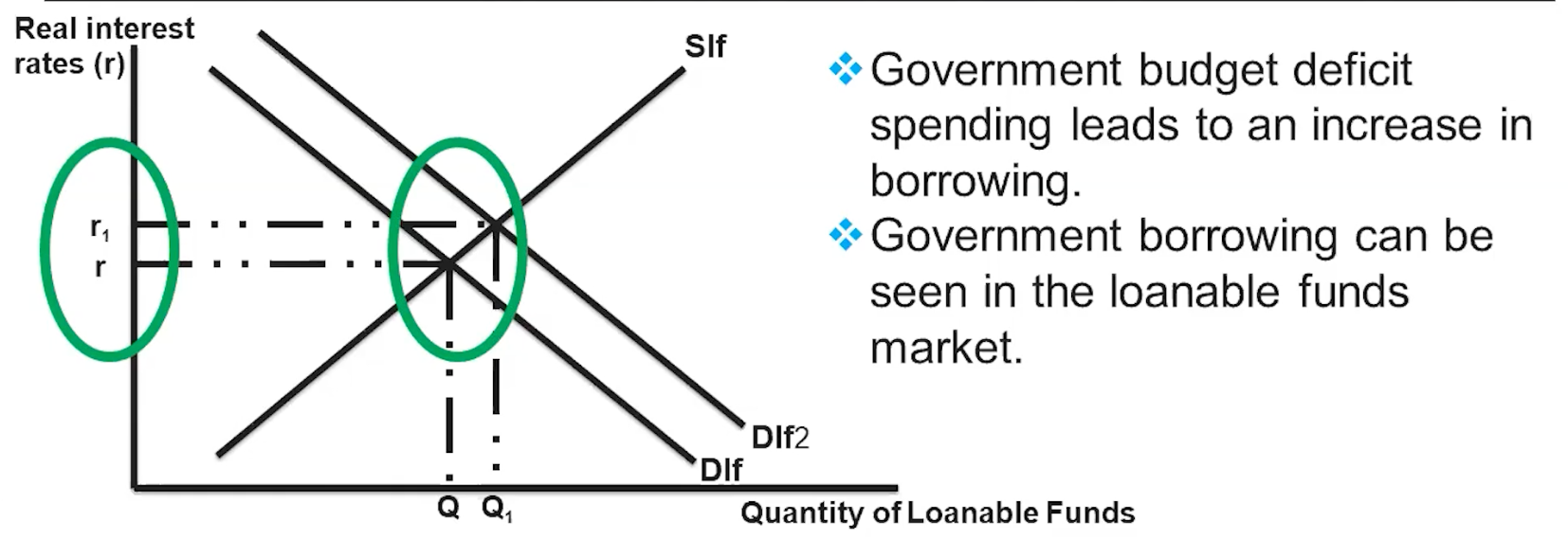Crowding out is when the government budget is in a deficit and operating in expansionary fiscal policy, which has a negative impact by driving up interest rates and reducing investment. To revise on fiscal policy, remember that expansionary fiscal policy is when we increase government spending or reduce taxes. We usually use expansionary fiscal policy to combat recessionary gaps.
However, this leads to an increase in the government budget deficit, which also leads to an increase in borrowing. This can be seen through a rightward demand shift in the loanable funds market. Essentially, we have higher real interest rates.

To look at this step-by-step:
- We are in a recessionary gap
- We utilize expansionary fiscal policy to shift the aggregate demand curve to the right
- This consequently leads to rising real interest rates, which slightly shifts the aggregate demand curve leftward
- Once again, this leads to a rise in unemployment
Fundamentally, private domestic investment spending is what drives economic growth. Investment spending is what increases spending on capital stock. Essentially, greater amounts of capital stock will increase the capacity of the economy to produce goods and services.
Fundamentally, a decrease in investment spending causes the economic growth rate to slow because fewer capital goods are being produced relative to the economy’s productive capacity. So, an increase in deficit spending leads to an increase in the real interest rate, which leads to a decrease in investment spending, resulting in less economic growth. Essentially, crowding out is the decrease in economic growth because of expansionary fiscal policy.